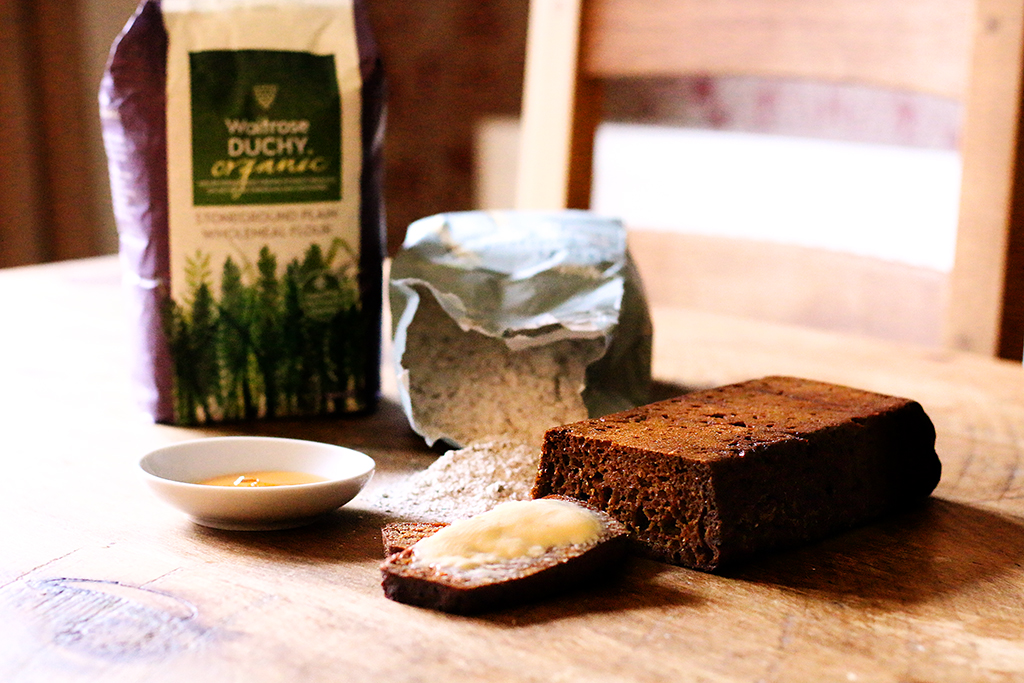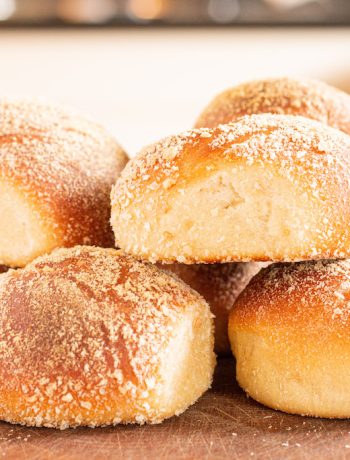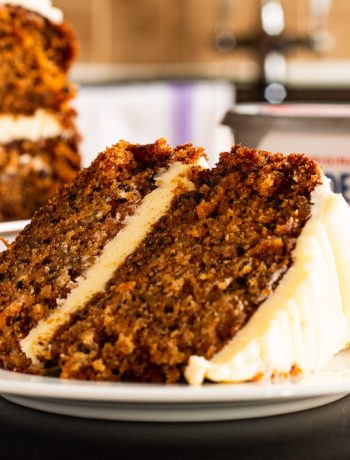þrumari. ‘Thunderbread.’ So called because it makes you fart if you eat enough of it (or because it is served at the Thorrablot festival in honour of the thunder god Thor – take your pick). We found rúgbrau∂ all over Iceland, and it was the perfect accompaniment to plokkfiskur (hashed or ‘stewed’ fish). It is great with smoked salmon and gravadlax, and maybe even with caviar if you are feeling flush.
The moment we tried rúgbrau∂, we knew exactly what it is – rúgbrau∂ is British ginger cake without the ginger, but there is one key difference – rúgbrau∂ is cooked at a low temperature for a very long time. Traditionally the bread mix was put in a pot and buried underground in the vicinity of a hot spring, and cooked for about 24 hours. That’s where its other name ‘hverabrauð’ (hot spring bread) comes from. People still use geyser steam to cook rúgbrau∂, and there is a cool hack whereby it can be cooked in an empty Tetrapak carton.
In a domestic oven, the hot spring can be approximated by a 100˚C, 7-hour bake. I did mine overnight, and the cat’s morning bloody caterwaul provided the required alarm.
Rúgbrau∂ uses rye flour, which was imported from Denmark under the governance of a 200-year trade monopoly instituted in the 17th Century by the King Christian IV of Denmark. Rye was one of the few grains that the Danes let the Icelanders have, and supplies of other grains were often intermittent or spoiled in transit. Rúgbrau∂, therefore, became a popular staple. It does not keep well as it dries easily, so it can have a second life soaked to make a soup, and that soup can then be sweetened with dried fruits and served as a dessert. Nothing goes to waste on Iceland.
Rúgbraud
Ingredients
- 115g dark rye flour (Waitrose stock this)
- 45g wholemeal flour
- 1 tsp baking powder
- Half a tsp bicarbonate of soda
- A large pinch of salt
- 284ml buttermilk (Waitrose do it in exactly this quantity)
- 5 tbsp golden syrup
Instructions
Preheat the oven to 180˚C.
Mix all the ingredients together in one go.
Line and grease a 1lb loaf tin (it is important to grease to stop the mixture from 'grabbing' the sides and leaving you with a sunken centre).
Pour the mixture into the tin.
Cover the tin with a dome of tin foil and seal the sides quite well – trapping steam is key to cooking this.
Put the tin in the oven and immediately reduce the temperature to 100˚C.
Bake for 7 hours.
Turn out and cool.
Serve with butter at least. Add sliced egg, salmon, gravadlax and anything else that reminds you of Scandinavia.






3 Comments
Trevor
05/10/2021 at 6:00 pmHi I found this rugbraud recipe more or less the same on another blog and tried it. It turned out very sticky and very squishy… like a stickier banana bread. I wonder if you have insight into what I might have done wrong. As far as I can tell my measurements were quite precise. I used homemade buttermilk though using whole milk and vinegar. If I put too much of anything it would have been the syrup by perhaps a tbsp. I also have a small oven and I used a 1lb loaf pan with a loose fitting lid. What texture should I expect from this recipe. Moist but firm? Or is it spongier?
Nigel Eastmond
05/10/2021 at 9:33 pmHi Trevor, this bread is quite squishy and chewy. I liken it to the Soreen brand of malt bread available in the UK.
Trevor
06/10/2021 at 1:48 pmThank you for your quick reply. Well it’s not what I was expecting but it sounds like I did okay (besides the loaf sticking to the sides a bit). I do suspect that mine could have been chewier though. It’s closer to cake in texture than bread and I guess it should be right in the middle by your comparison to soreen malt loaf.